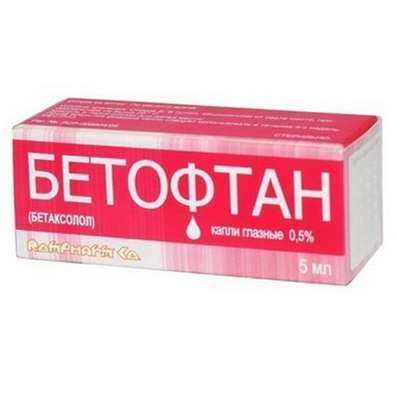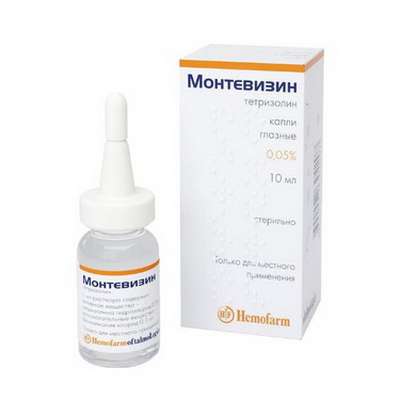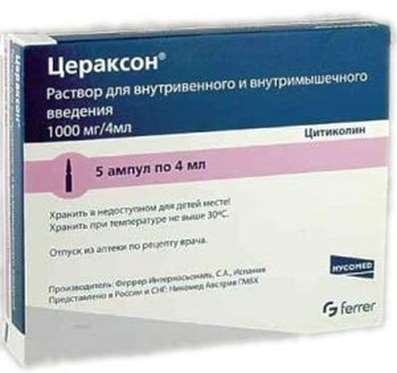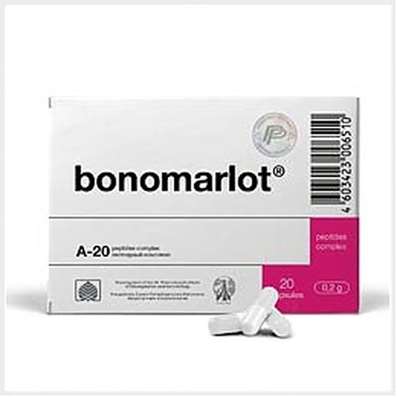Brain and Alcohol
16 Dec 2016
Physiologist Dr. Doping tells about the causes of alcohol consumption, types of alcohol dependence and susceptibility to alcohol.
"Alcohol" - is a word that stands for 'the soul of wine' and as many words beginning with "al" (algebra, alcohol), is of Arabic origin. For the first time the substance is identified Arab alchemists around the IX century BC. In Europe, the monks learned to devote some time later this substance, but sooner or later, those who are interested in chemistry and mutual transformations of substances to this molecule would be reached.
Alcohol is a substance that is not a mediator, but nonetheless a very powerful influence on the work of nerve cells. This is due to its unusual properties, because most of the molecules are readily soluble in either water or fat. Then, they have found in the cytoplasm of cells, in the extracellular medium or, for example, embedded in the cell membranes. There are two layers of lipids and fat-soluble molecules, such as cholesterol, are normally there. Alcohol and perfectly soluble in water and fats in the body so it for virtually no barriers. For molecules CH3-CH2-OH or C2H5OH no obstructions in the body, respectively, it penetrates anywhere, including the brain.
The case is still in the fact that alcohol - this is not entirely foreign molecules to our body, there is a small amount of alcohol is constantly produced in our cells only during the breakdown of glucose. In the blood completely teetotal human plasma can register up to 0.01% of alcohol.
Usually alcohol is measured not a percentage, and in parts per million. Mille ten times less than the percentage, respectively, 0.01% to 0,1 ‰. This is the value that is allowed by the legislation of many countries to the determination of the vehicle driver's blood plasma. Therefore alcohol to our body is not a foreign molecule, and its decay, degradation or assimilation, there are special enzymes that protect the person at the time when he takes alcohol.
So it turns out that in the history of mankind alcohol plays an important role and is a very common psychoactive drugs, in fact, allowed the drug. In many societies alcohol sold almost freely, when a person has reached a certain age (18, 20 or 25 years), he has full access to this drug, and nothing good about it. Once again I repeat that although alcohol - this is not the mediator, but nevertheless it is a very powerful influence on the work of all the nerve cells.
Now we know that, firstly, it is embedded in the membrane of neurons and alters the functioning of many receptors and ion channels, and secondly, it is capable to directly affect some receptors, such as receptors of the gamma-aminobutyric acid, that is our major inhibitory neurotransmitter.
To cope with alcohol withdrawal – you can use Meldonium, Phenotropil, Semax and Cerebrolysine.
Let's try to imagine the effects of increasing doses of alcohol in terms of the work of nerve cells. Now I will describe some typical picture that the average characteristic of the human brain, even though each individual may be somewhat different dynamic, but let us first take the average case.
So-called small amount of alcohol, of 10-20 grams of alcohol equivalent primarily affects the dopamine neurons. It so happened that the membrane dopamine neurons dopamine receptors more sensitive to alcohol penetration, respectively, a small dose of alcohol causes the activation of dopamine. Dopamine - a neurotransmitter that is largely responsible for motor activity, for positive emotions, so many people have a small amount of alcohol, which still does not cause movement disorders, disorders of thinking, is the activating effect: mood lift, removal of fatigue - stimulating effect. And to stay here. But when a person begins to drink alcohol, it is at this low dose is usually not stopped.
The average dose of alcohol - from 20 to 60-80 grams of alcohol equivalent. If this dose is already beginning to react very powerful system of GABA (gamma-aminobutyric acid), in addition to a small activation of the dopamine system is increasing activation of the GABA system. GABA - is the main mediator of the brake, that is, begins retarding effect of alcohol on the brain, and this action is called a depressant, so calming, anti-stress effect. And many people who drink, especially those who regularly drink, you say: "We drink to relieve stress. Hard work every day, it is difficult to communicate with superiors, subordinates and people outside all the time and are something they want from us. " Stress - is the most common cause of alcohol use, at least when people report about it.
A large dose of alcohol - this is where we go already for 60-100 grams of alcohol equivalent. You can convert to a tip: 100 grams of alcohol equivalent - a half bottle of vodka, 250 grams. At this point, begin to suffer is all mediator systems, everything here is very different, because the brain is still with us is different. Someone at this point can be very aggressive, someone on the contrary, to hit into mourning and depression, someone will be very horny. In general, this is different. Sometimes they say that a drunken man is manifested essence. In fact, it is a failure of the brain under the influence of a powerful dose of psychotropic drug.
If a person uses a substance often and regularly, ie once a week, at least in moderate doses, the mediator systems, synapses begin to respond to the regular activation of dopamine and GABA, it begins to develop habituation and dependence. As a rule, initially developed change is in the dopamine system of the same type as is addictive to psychomotor stimulants such as amphetamine, but not so dramatically: after all, alcohol is not an amphetamine, but nevertheless change, of course, visible, they can be fixed and they, of course, change the person's behavior. It turns out that if in the morning you do not have used this dose of alcohol, your dopamine neurons is difficult to start, you are in a reduced emotional status. Such people drink to cheer up, and this is the beginning of alcoholism.
There is a concept of alcoholism for dopamine type: a man drinking in the morning, and something obviously strong to throw the body of alcohol and to the dopamine system can run and he perceived the world not through the prism of depressive and "normal."
The second level - is alcoholism and dependence on the type of GABA. To do this, you usually need more try. In this case, already suffering GABA neurons and GABA synapses, and if a person does not receive alcohol, then the system is gamma-aminobutyric acid works weaker than necessary, and the gamma-aminobutyric acid - the main brake mediator. If you knocked down the activity of this system, the glutamate system - the major excitatory neurotransmitter - pull the blanket over himself, and in the brain begin a global bias towards excessive activity. It is manifest that the motion will be inaccurate, emotions - is not very adequate, and thought processes will be difficult to control, they will start jumping from subject to subject (eg, the level of attention will fall). Alcoholism on the GABA-type developing as a violation of the braking system.
If a person tries to abruptly stop taking alcohol, you manifest what is called abstinence syndrome (Meldonium and Phenylpiracetam could give a hand). When alcoholism for dopamine type the withdrawal will appear as lethargy and depression, and alcoholism on the GABA-type - as the hyperactivation, reaching to hallucinations - what is called delirium tremens (hallucinations, not on the background of large doses of alcohol, but on the contrary, hallucinations occurring against the backdrop of withdrawal symptoms in a person who is dependent on the GABA-type and reason for the third day, do not drink). At this point, there are very specific hallucinatory visions, mostly unpleasant little animals that crawl on your body, on the table, talking to you. It can be devils, aliens, crocodiles - a lot of all sorts of unpleasant animals. It was called at the time delirium tremens. Red Devils - fever, which occurs on the background of an infectious disease, and a white - on a background of alcohol withdrawal syndrome.
Get out of the alcohol addiction is very, very difficult. Problem is aggravated by the fact that, as a rule, the body and, in particular, an alcoholic brain damage are greatly. We say that the alcoholic brain looks even worse than his liver, because in fact C2H5OH - not a harmless molecule: at high doses, when it breaks, there are a number of nasty toxic substances, and these substances damage the entire body, including including nerve cells as the most sensitive of our body system.
As I said, for us, alcohol is not entirely alien to the molecule, so there degradation enzymes. First operates alcohol dehydrogenase, which converts alcohol to acetaldehyde. At this point, the effect of alcohol goes, but there is a molecule of acetaldehyde, and it is toxic. hangover effects are connected with the acetaldehyde poisoning, so it is important to load a second enzyme called acetaldehyde dehydrogenase. It converts acetaldehyde into acetic acid, or in some more harmless molecules. The main chain of - is alcohol - acetaldehyde - the collapse of acetaldehyde. It turns out that, depending on how the human gene set in these enzymes, it has how active acetaldehyde dehydrogenase, alcohol dehydrogenase, human individual reaction depend on the alcohol.
If you work well both enzymes, you can almost get drunk, you will be almost no hangover. There are people who are able to drink a lot of alcohol and be at new: they have such enzyme systems. Joy is not: as a rule, it goes with age, so if you are not yet taking, then later at some point anyway take.
The most common option - when alcohol dehydrogenase is actively and acetaldehyde dehydrogenase - no. Then the person is drinking, acetaldehyde accumulates, begin the poisoning and the effects of a hangover. If acetaldehyde dehydrogenase is working very bad hangover begins immediately, even with the lowest dose. Such people - convinced abstainers, because they have small doses of alcohol immediately begins a headache. How can I drink if immediately begins poisoning?
Incidentally, this effect is used in some embodiments of the treatment of alcoholism because there blockers acetaldehyde dehydrogenase, substances like teturama turn off the enzyme. And even the lowest dose of alcohol can lead a person in a very poor condition, will need an ambulance. So afraid of alcoholics to stop drinking alcohol.
In fact, the most dangerous option - when alcohol dehydrogenase is doing badly. Then the person gets drunk and gets a lot of positive emotions from even small amounts of alcohol. It would seem, what's wrong? But it turns out that in this situation is most easily arise addiction and dependence, particularly dopamine type. People who get drunk easily, are at risk, and they should be treated with extreme caution to receive alcohol. And we must remember that, despite the fact that alcohol is very accessible, it is a dangerous narcotic-like drug that can break down and your life and the lives of your loved ones.

 Cart
Cart





